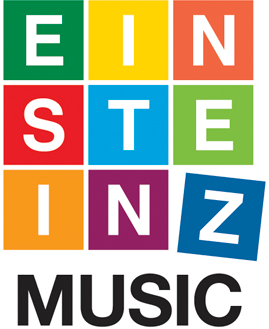Einsteinz Music classes are run in age groups
Einsteinz Music classes are run in age groups to ensure children develop with their peers. Groups include Babies, Toddlers, Juniors & Preschoolers.
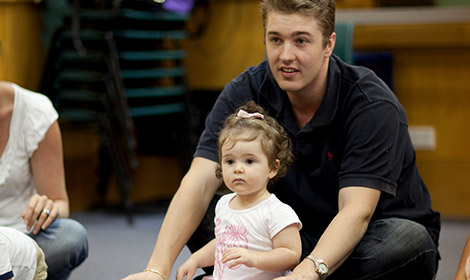
babies: 6 months until walking or on 1 sleep a day
As small babies begin to discover their fingers and toes and develop control over their own movements we can encourage this journey of self-discovery and development through touching songs, games, rhymes and chants.
We can also reinforce a baby’s efforts to talk to us and therefore foster the development of language and singing by playing simple echoing games and again through simple songs and rhymes. Patting, rocking, walking and gentle bouncing are all very natural ways in which we can begin to reinforce the concept of beat and the pleasure of music to small babies.
The repertoire for Babe’s classes allows for the exploration of sound and instruments, gives them the opportunity to vocalise sounds and to respond to social cues.
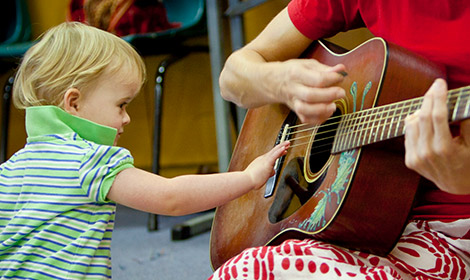
toddlers: 1 – 2 years
From one year, your child can begin to participate in action songs and rhymes. They can clap hands, bang and shake different percussion instruments and move to all kinds of music, experiencing different styles, tempos, pitches, rhythms and dynamics.
Our toddler classes hone in on their listening skills, social skills (hello, goodbye, taking turns, waiting their turn and following instructions). Their language skills are developed through sounds, repetition, finishing song lyrics, naming animals, colours and counting. Cognitive skills are refined by following instructions and comprehension of concepts and physically we work on their fine and gross motor skills through movement and instrument playing.
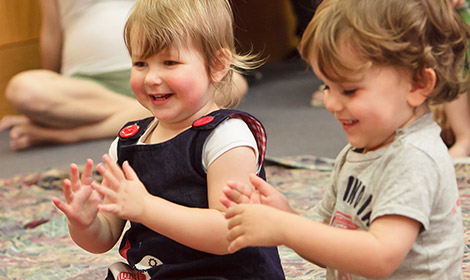
juniors: 2 – 3 years
From the age of two, through movement, games, songs, and playing simple rhythm instruments, you can slowly start to instil both an understanding of the concept of beat, and an ability to play along to the beat. Your child will begin to synchronise music through movement and playing rhythm instruments. The concept of rhythm as opposed to beat can be slowly introduced through body percussion e.g. clapping and simple instruments to express the pattern of the words in songs, rhymes and chants.
Physically they will be able to jump with both feet, skip and gallop, and continue to develop bi-lateral work and cross their mid-line. The concept of rhythm as opposed to beat can be slowly introduced through body percussion e.g. clapping and simple instruments to express the pattern of the words in songs, rhymes and chants.
At this age, children can express themselves emotionally, (can talk about themselves and identify emotions in songs). They can also follow 2 step instructions, so we introduce a lot of action songs into the repertoire.
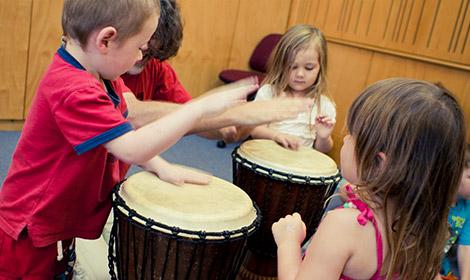
preschoolers: 3 – 5 years
By three years of age your child will be singing very simple songs and phrases with some accuracy, as they gain greater control of their voice and their ability to change to pitch, dynamics and tempo. As their ability to hear, move and play to the beat improves, they can also begin experimenting with simple rhythmic patterns, they can skip, gallop in time to music, complete big body gross motor tasks, can dance and follow more complex instructions, play drums with two hands and will have an awareness of rhythm and beat.
A three year old can express himself by making up his own little songs and moving freely to music. At four the world of music will really begin to open up for your child.
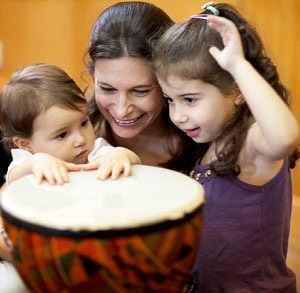
mixed classes
In some venues we may not be able to run classes to the specified age groups defined above. This may be because there are not enough children enrolled, because it is a new venue and we do not have enough enrolments to run three age-specific classes or because we are experimenting with different age mixes. In these cases, the lesson plans will be designed specifically for the children enrolled in the class. The blend of age groups in these classes have proven to be very successful as the younger children learn from the older ones and the older ones benefit from being mentors. Most Junior and Preschooler classes tend to be mixed because younger siblings are welcome to attend the same class as their older sibling.
